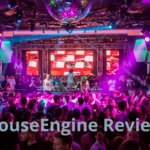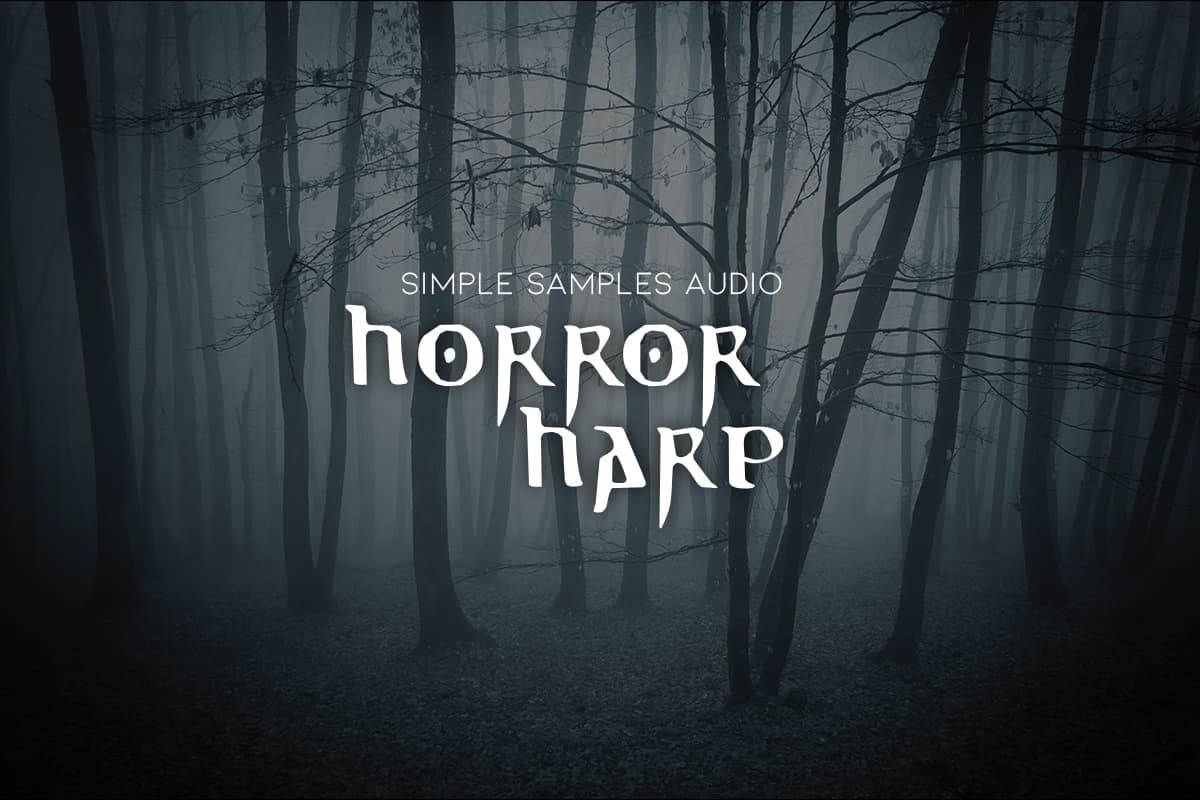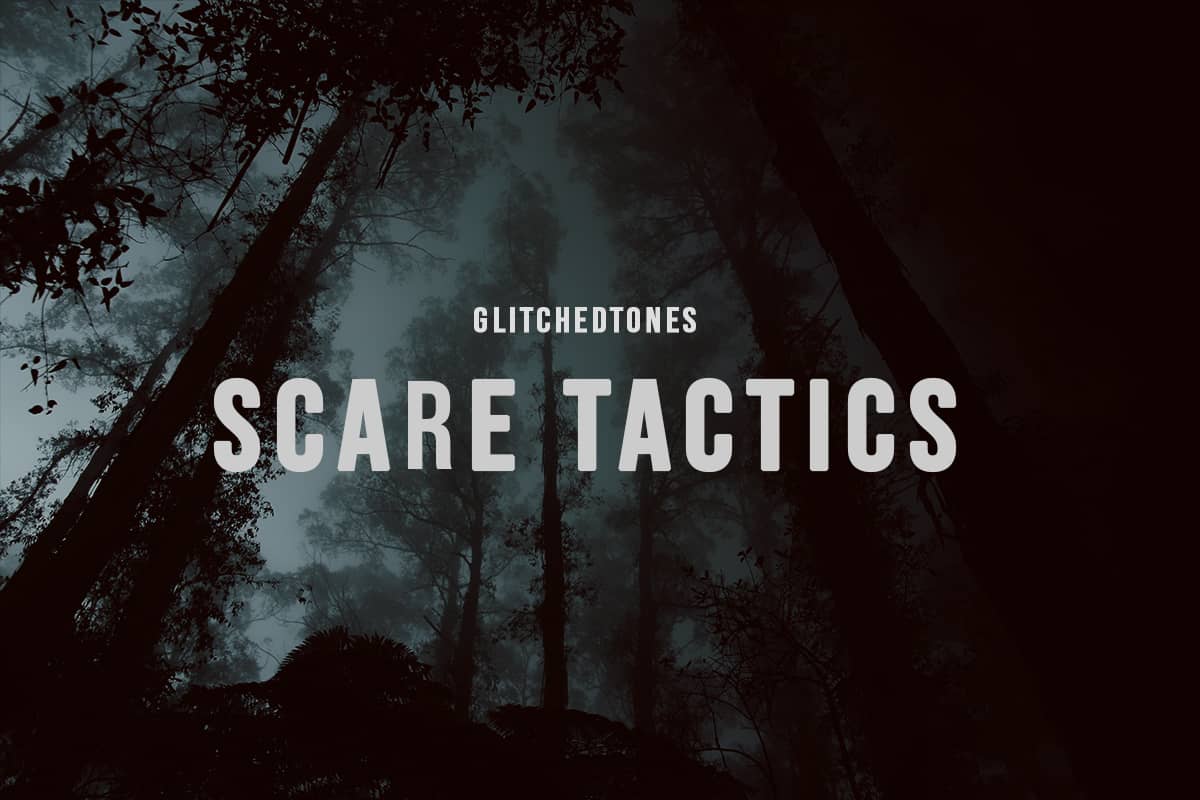If you’re into house music, then you know that the chords are what make or break a track. A good chord progression can turn a simple beat into an earworm that will have people dancing all night long. But writing chord progressions can be difficult – especially if you’re not a trained musician. That’s where HouseEngine comes in. This plugin turns your chords into professional MIDI patterns in minutes, so you can focus on the creative aspects of songwriting!
HouseEngine is a music production program that was developed specifically for house music, yet its developers claim that early testers have had success with it in other genres.
The HouseEngine provides a variety of house-appropriate preview sounds so you can test out the program’s auto-generated sections. You’ll need to have chunks of audio on separate tracks in your DAW for each one, once you’ve decided which ones work for you; drag-and-drop the parts to another track for playback by your own software or hardware synths.
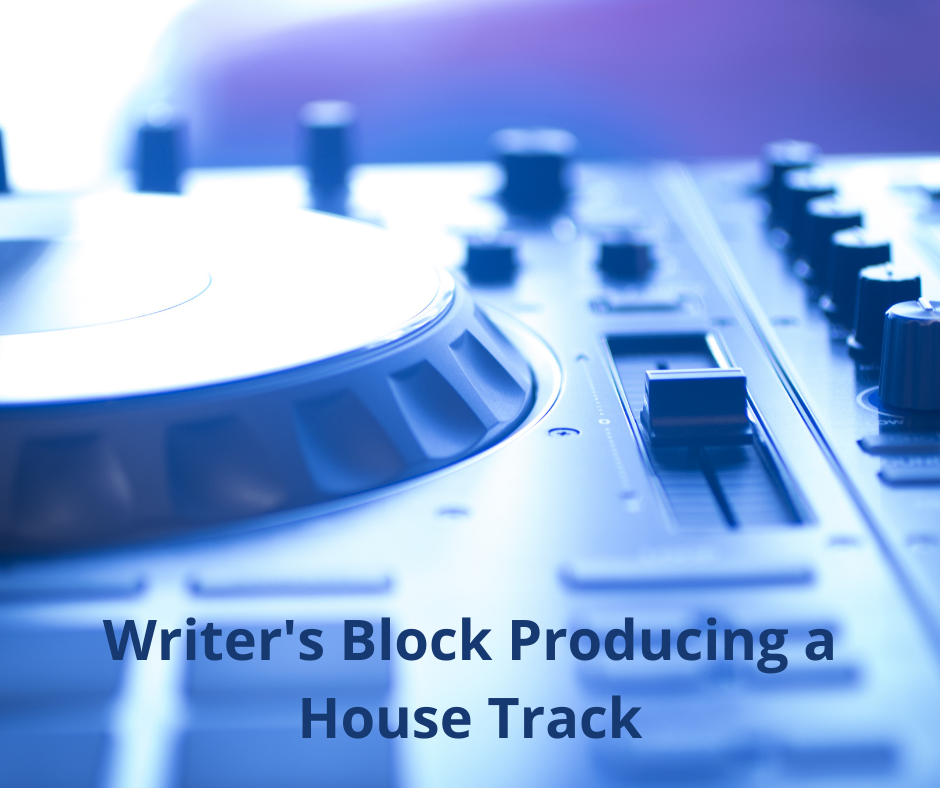
You may connect a digital instrument to another instrument via MIDI Out and route it. It is recommended that you create a dedicated channel for this purpose. If you’re utilizing the VST version, leave HouseEngine’s MIDI on another track.
Writer’s Block Producing a House Track
It’s happened to the best of us. You’re sitting at your keyboard, ready to write the next huge House hit, and…nothing. The ideas just won’t flow.
You start to feel frustrated, and before you know it, an hour has passed and you haven’t written a single note. If you’re suffering from writer’s block, there are a few things you can do to get the creative juices flowing again.
First, try stepping away from the keyboard and taking a walk. Sometimes, all you need is a change of scenery to jumpstart your creativity. If that doesn’t work, try listening to some of your favorite House tracks for inspiration. Don’t worry if you don’t have any big ideas at first – sometimes it takes a while for the ideas to come. Just keep at it, and eventually, you’ll find the perfect chord progression for your track!
HouseEngine Review
If you’re looking for a quick and easy way to write professional-sounding House tracks, then you need HouseEngine. This plugin will turn your chords into MIDI patterns in minutes, so you can focus on the creative aspects of songwriting! HouseEngine is a must-have for any House producer!
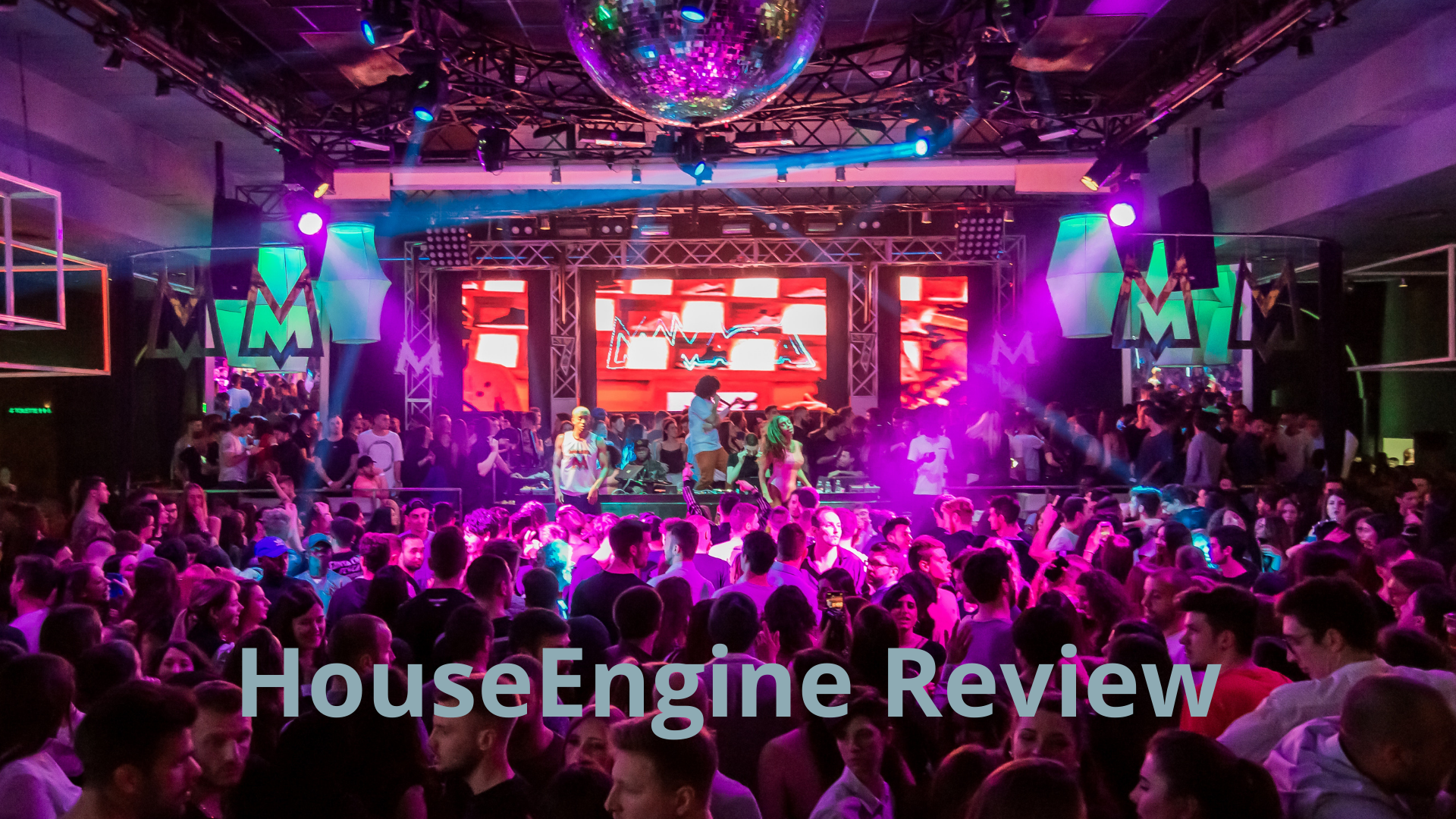
HouseEngine Presets Get Your Started
HouseEngine is a powerful plug-in that can help you create new melodies, basslines, hooks, and riffs automatically from your MIDI chord progressions. The plug-in analyzes your chord progression and generates new ideas based on the harmonic potential of the chords you are using.
You can then audition the generated ideas in real-time and select the ones you want to use in your track. HouseEngine also includes a built-in arpeggiator that can add movement to your chord progressions.
In addition, the plug-in includes a library of over 300 presets created by professional producers and DJs. With HouseEngine, you can quickly and easily transform your chord progressions into complete tracks.
You may use the Presets panel to generate categories like Bass, Keys, Lead, Strings, and other presets. Each category has its own set of controls that can be used to generate different results.
Compose House with Ease
As a musician, I am always looking for ways to improve my craft. Whether it’s taking online courses, attending workshops, or simply practicing at home, I am always trying to find new ways to grow as an artist.
Recently, I came across a feature that has been a game-changer for me: chord progressions. Chord progressions are sequences of chords that create a particular mood or feeling. They are often used in pop and rock songs, as they can add a lot of energy and excitement to the music. However, they can be used in any genre of music. The beauty of chord progressions is that they can be as simple or as complex as you want them to be.
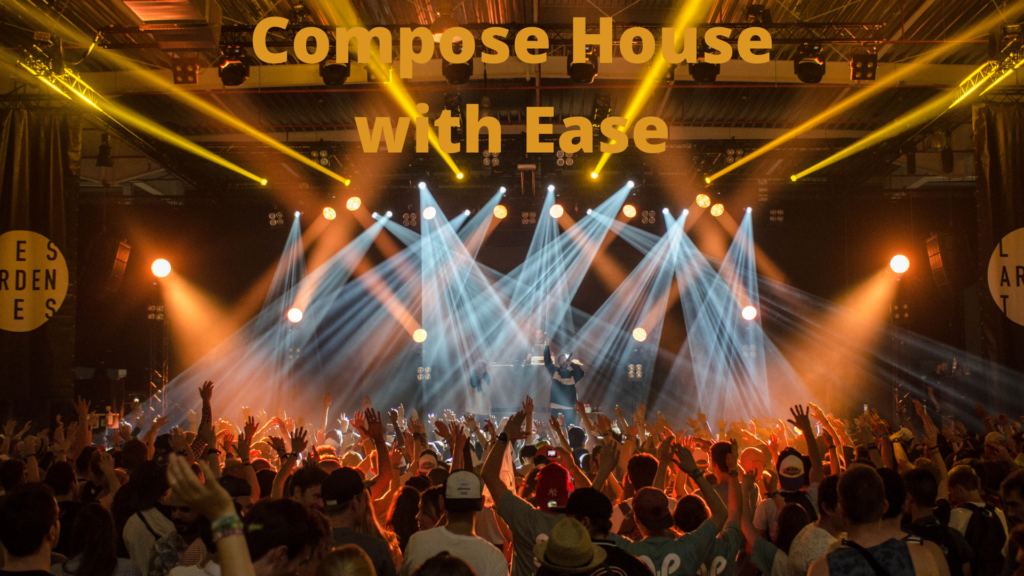
If you’re looking for a quick way to create chord progressions, HouseEngine is a great option. It contains several different generators that can help you get started even faster. With just a few clicks, you can create progressions that sound great and are perfect for any genre of music.
Best of all, the progressions can be exported as MIDI files so you can use them in your favorite DAW or music software. Whether you’re a beginner or a pro, HouseEngine is a great tool for creating chord progressions.
The HouseEngine algorithm is capable of creating new chord progressions for any given song. Simply select the style of music you want to create, and the HouseEngine will generate a new chord progression for you.
There are dozens of different styles to choose from, so you can always find the perfect sound for your song. Whether you’re looking for classic house vibes or more modern open chords, the HouseEngine has you covered. And best of all, you can use the HouseEngine to create a whole new song from scratch.
- Import your MIDI chord progression.
- Check if your chord progression was imported correctly:
- Press play in your DAW to listen to the chords.
- Right-click on a chord to change the bass note if needed.
- The plug-in will suggest a fitting scale for you. In most cases, this scale will be correct, but you can also set your own choice here.
- Press OK when everything is alright (in most cases you won’t have to change anything).
- You can see a big list of presets now. Select a preset, then press play in your DAW for a preview.
- Use the search options to find nice presets. You can change the pitch and the swing of the generated output with the sliders.
- Do you like a preset? Drag and drop the MIDI field to your DAW. The plug-in will copy the MIDI data to your DAW then.
Importing Midi Chord Progressions
HouseEngine is a powerful tool for music producers, and one of its key features is the ability to import MIDI chord progressions. This allows users to bring in their own progressions, or to use the stock chord progressions that are included with the software. There are also several different chord progression generators that can be used to create new progressions.
These generators provide a convenient way to create complex progressions that would be difficult to create by hand. As a result, they are an essential part of HouseEngine’s workflow. By giving users the ability to import MIDI chord progressions, HouseEngine has made it possible for anyone to create Professional quality house music.
If you’re creating a MIDI file to use as accompaniment for a song, it’s important to make sure that the file contains only chords, not melodies.
Having just one MIDI channel with data helps to keep things simpler and more organized. Additionally, all notes should be quantized to 16th notes to ensure that they line up perfectly with the beat.
For the best results, it’s also recommended Dedicated bass notes. HouseEngine will happily create a bass line for you if your chord progression does not include specific bass notes (the lowest notes of the chords).
By taking these steps, you can be confident that your MIDI file will provide the perfect backing for your song.
Creating a House song from scratch with 3 HouseEngines.
Hauke’s video is an excellent guide for anyone interested in learning how to produce a House song from scratch. In the video, he uses three HouseEngines – HouseEngine, Ableton Live 11, Hive 2, and Kontakt – to create a track that is both catchy and danceable.
He starts by laying down a solid foundation with a powerful bassline and some simple drums. From there, he adds in some classic House elements like piano chords and synth stabs. The result is a track that is sure to get any dance floor moving. Hauke’s video is a great resource for anyone looking to learn the basics of House production.
HouseEngine Standard Edition or Pro Edition
HouseEngine is a powerful music composition tool that allows you to easily create complex MIDI arrangements. The Standard Edition provides all the features you need to get started, while the Pro edition includes a mass MIDI export function so that you can output hundreds of MIDI parts in one go.
The Pro edition also comes with a license to sell the generated MIDI parts commercially, so if you’re looking to take your music production to the next level, HouseEngine is a perfect choice.

Export Generated Melodies MIDI Files
Creating music can be a complex and time-consuming process, but with HouseEngine, it’s easy to get great results in minutes. Simply click on the MIDI field behind a HouseEngine preset and drag it to a track of your DAW.
The melody will automatically be generated, and you can then export it to use in your own songs. With its wide range of presets, HouseEngine is perfect for any style of music. So whether you’re creating a club track or a chilled-out vibe, you’ll be able to find the perfect melody with ease.
After you’ve exported your MIDI file, it’s time to open up your DAW and start working on the notes. You can use all of the tools at your disposal to craft something completely unique, or you can simply leave the notes as they are.
If you want to add some personal touches, try experimenting with different instruments or Effects. And don’t forget to add a bit of dynamics – after all, MIDI is just a series of numbers, so it’s up to you to give the notes some life.
With a little bit of creativity, you can turn your MIDI file into a work of art. So go ahead and get started – the possibilities are endless.
The MIDI Generator is a powerful tool that allows you to create your own MIDI files. The Pro version includes a built-in mass-exporter, which allows you to write hundreds of generated phrases directly to a folder on your computer.
This is the perfect way to build your own collection of ready-to-use MIDI files. With the MIDI Generator, you can create any type of MIDI file you need, whether it’s for a specific song or for a general-purpose. There are no limits to what you can create with this tool. Whether you’re a beginner or a pro, the MIDI Generator is the perfect tool for generating high-quality MIDI files which you can start selling.
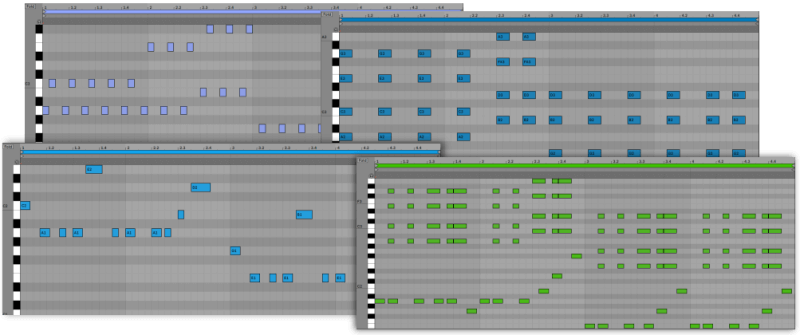
HouseEngine Presets
HouseEngine comes with many presets. The following “preset families” consist of different variations (for example, “keys 002” and “keys 021” are both presets of the “keys” family). From bright and shiny to dark and gritty, HouseEngine has a preset for every production need.
The “main” preset family is perfect for most tracks, while the “bass” and “percussion” families add some extra thump. It does not provide percussion midi data out-of-the-box use of the generated MIDI for my percussion. With so many options to choose from, HouseEngine is the perfect tool for any producer.
- “keys”: Evergreen piano rhythms with bass and top part.
- “rhythmic chords”: Rhythmic keys without bass note movements.
- “rhythmic thin chords”: Rhythmic keys with just two notes of the chord.
- “melodious bass”: Hypnotic bass riffs that mostly play on the associated Pentatonic scale.
- “melodious bass harmonic”: Basslines that play on the chord notes.
- “rhythmic bass”: Basslines that play on the bass notes of the chords.
- “high strings”: Classic, slow strings for the background.
- “arpeggio”: Repetitive chord melodies for all occasions.
- “long notes melody”: Melodies with longer notes.
- “rhythmic layered notes melody”: Two notes play a rhythmic melody side by side.
- “short notes melody”: Melodies with short, snappy notes.
- “spaced notes melody”: Very short melody fragments. Good for backgrounds. Add delay for taste.
- “simple stab bass rhythm”: Very short and snappy bass notes.
- “simple stab chords rhythm”: Very short and snappy rhythmic chords.
- “simple stab scale note rhythm”: Very short and snappy scale root notes. Good for a repetitive “drone” background rhythm.
There are also single presets that are useful for certain situations:
- “legato bass”: Good for simple, long sub-bass synths.
- “simple chords”: Just the top part of the chords.
- “simple full chords”: The chord progression with top and bass notes.
- “simple gentle chords”: Chords with a little “strum” effect.
- “simple large chords 1”: Chords with added notes to make the sound fuller.
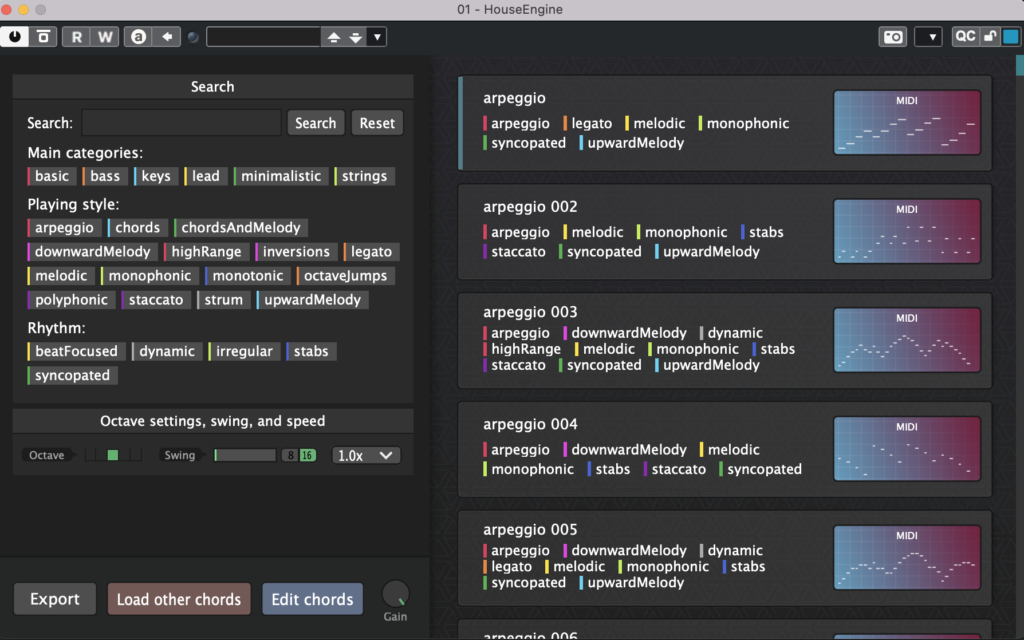
Conclusion
The HouseEngine MIDI Generator is a powerful tool that allows you to create your own MIDI files. The Pro version includes a built-in mass-exporter, which allows you to write hundreds of generated phrases directly to a folder on your computer. This is the perfect way to build your own collection of ready-to-use MIDI files.
With the MIDI Generator, you can create any type of MIDI file you need, whether it’s for a specific song or for a general-purpose. There are no limits to what you can create with this tool. Whether you’re a beginner or a pro, the MIDI Generator is the perfect tool for generating high-quality MIDI files which you can start selling.
HouseEngine comes with many presets. HouseEngine has a preset for every production need from bright and shiny to dark and gritty.
HouseEngine is great. I’ve been using it in every project to provide me with quick musical inspiration ever since I discovered it last year. It examines my chords, makes suggestions for improvements and scales, and then provides me with a virtually limitless number of midi options.
This is superior to anything else I’ve ever used in terms of simplicity. The ease with which I can drag-drop suggested midi straight into my DAW while the synth is playing, and then chop up the suggestions on the fly to generate new patterns makes it noteworthy. It just works fantastic.
Chillout music is the perfect genre for unwinding, with its slow tempo and mellow vibe. That’s where ChilloutEngine comes in! Another tool for your to compose with ease.
Rating: Five Out of Five Stars
Looking to jumpstart your House production? Check out HouseEngine, a powerful MIDI pattern generator that takes your chords and turns them into professional-sounding MIDI patterns in minutes. HouseEngine is perfect for anyone looking to add some creativity and flair to their House tracks. The software is user-friendly and intuitive, making it easy for producers of all skill levels to get started. Need more convincing? Just take a look at the glowing Polaris review, which raves about the program’s ability to take your music to the next level.
No more fiddling around with mismatching MIDI packs – all output will be in tune with your original chords! Whether you’re looking for a deep bassline, catchy melody, or sparkling arpeggio, HouseEngine has you covered.
When it comes to creating music, there are all sorts of different tools that you can use. One of the most popular options is MIDI, which allows you to create and manipulate digital audio files. If you’re looking for a MIDI creation tool, then you might want to check out HouseEngine. HouseEngine is available in two editions: Standard and Pro.
The Standard Edition includes all of the basic features that you need to create MIDI files. However, if you’re looking for more advanced features, then you’ll want to upgrade to the Pro edition.
The Pro edition includes a mass MIDI export function, which makes it easy to output hundreds of MIDI parts in one go. It also comes with a license to sell the generated MIDI parts commercially.
Music producers often find themselves struggling for ideas when it comes to creating new tracks. Thankfully, there are now a number of tools and plugins available that can help to provide inspiration and jumpstart the creative process. One such plugin is the HouseEngine Inspire plugin from FeelYourSound.
This plugin is designed to provide a wide range of sounds and samples that can be used to create House tracks. I have found it to be an invaluable tool in my own workflow, and I regularly use it to help generate new ideas. The plugin comes with a wide range of presets, as well as a number of different modulation options that allow you to customize the sound to your liking. In addition, the interface is extremely user-friendly, making it easy.
Overall, HouseEngine is a great tool that can help you quickly create professional-sounding MIDI patterns. If you’re looking for a way to jumpstart your House production, then I would highly recommend checking out HouseEngine.
The HouseEngine is a powerful tool that any producer can use to create professional-sounding MIDI patterns. Whether you’re a beginner or a pro, this plugin is definitely worth checking out!
HouseEngine FAQ
What is HouseEngine?
HouseEngine is a powerful MIDI pattern generator that takes your chords and turns them into professional-sounding MIDI patterns in minutes.
How easy is it to use?
The interface is extremely user-friendly, making it easy to create MIDI files.
What are the benefits of using HouseEngine?
There are many benefits of using HouseEngine, including the ability to output hundreds of MIDI parts in one go, as well as the license to sell the generated MIDI parts commercially.
Overall, HouseEngine is a great tool that can help you quickly create professional-sounding MIDI patterns. If you’re looking for a way to jumpstart your House production, then I would highly recommend checking out HouseEngine.
Is there a free trial?
Yes! You can try HouseEngine Standard for free. If you want to upgrade to HouseEngine Pro, you can do so at any time.


